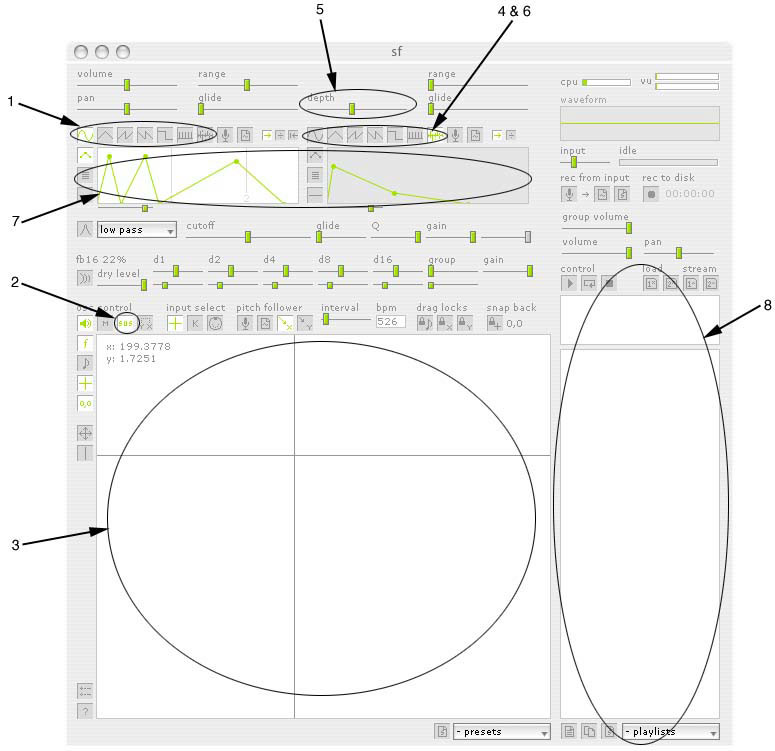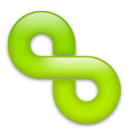:: SUPPORT : TUTORIALS
- - - - - - -
:: Getting started with Spongefork
A brief tutorial on how to start getting sounds
by Dan Kibke
Basic working techniques:
Finding the sound
One of the best ways to get started with Spongefork is to select a waveshape
(see #1 in diagram), turn on sustain
(#2 in diagram), click on a point in the xy modulation controller so that you have a sound active
(#3) and then start tweaking controls until you get something you like.
If you're just starting out with a simple waveshape things will sound pretty basic to start with. select another waveform in the modulator
(#4) and turn up the depth
(#5). click through various waveshape and see how it alters the sound
(#6). scribble on the xy modulation control (I use a Wacom tablet which lends itself perfectly to this interface) and see what you get. Experiment with pitching the sound way down and way up and seeing what happens at the extremes.
Try playing with the envelopes
(#7) to give the sound some movement and variation. load a audio file into the sample player
(#8) and load it into the oscillator by selecting the audio clip in the sample player and pressing CMD+1. Repeat the above and find some settings you like.

Now that you've got some sounds coming out, what do you do want to do?
If playing Spongefork in a live situation or jamming I will do this until I get a sound or "instrument" that I like and then "play" the instrument and create movement and patterns through the envelopes, xy modulation controller and with the aid of outboard effects.
Much the same goes for processing audio clips or as a sound design tool for generating raw material. So much of the appeal with Spongefork is it's deceptive simplicity while at the same time opening up a huge range of options through it's unlimited sound sources and expressiveness.
Download an example preset:
gurgle_feedback.zip
Some possible uses for Spongefork:
- standalone performance instrument
- play the waveshapes or a sample loaded into the oscillator
- record bits of audio in live, stacking them in the sample player and building a collage then loading select samples into the osc and playing them in conjunction with the loops
processing audio clips
- mess up drum loops
- mangle short vocal phrases
- sound design tool for generating raw material
- using waveforms and combinations of samples to create textures that you can expressively control via the xy modulation control.
As a member of Vancouver experimental electronic bands G42
and !kaput Dan Kibke finds fetish exploring sound generating
and mangling devices of an acoustic, hard and soft (ware)
nature. When not dabbling with sound, electronics, visual
elements, and adventures, he works as a Technical Manager
for the Art Institute of Vancouver. Information on G42 can be
found at
www.g42.net


